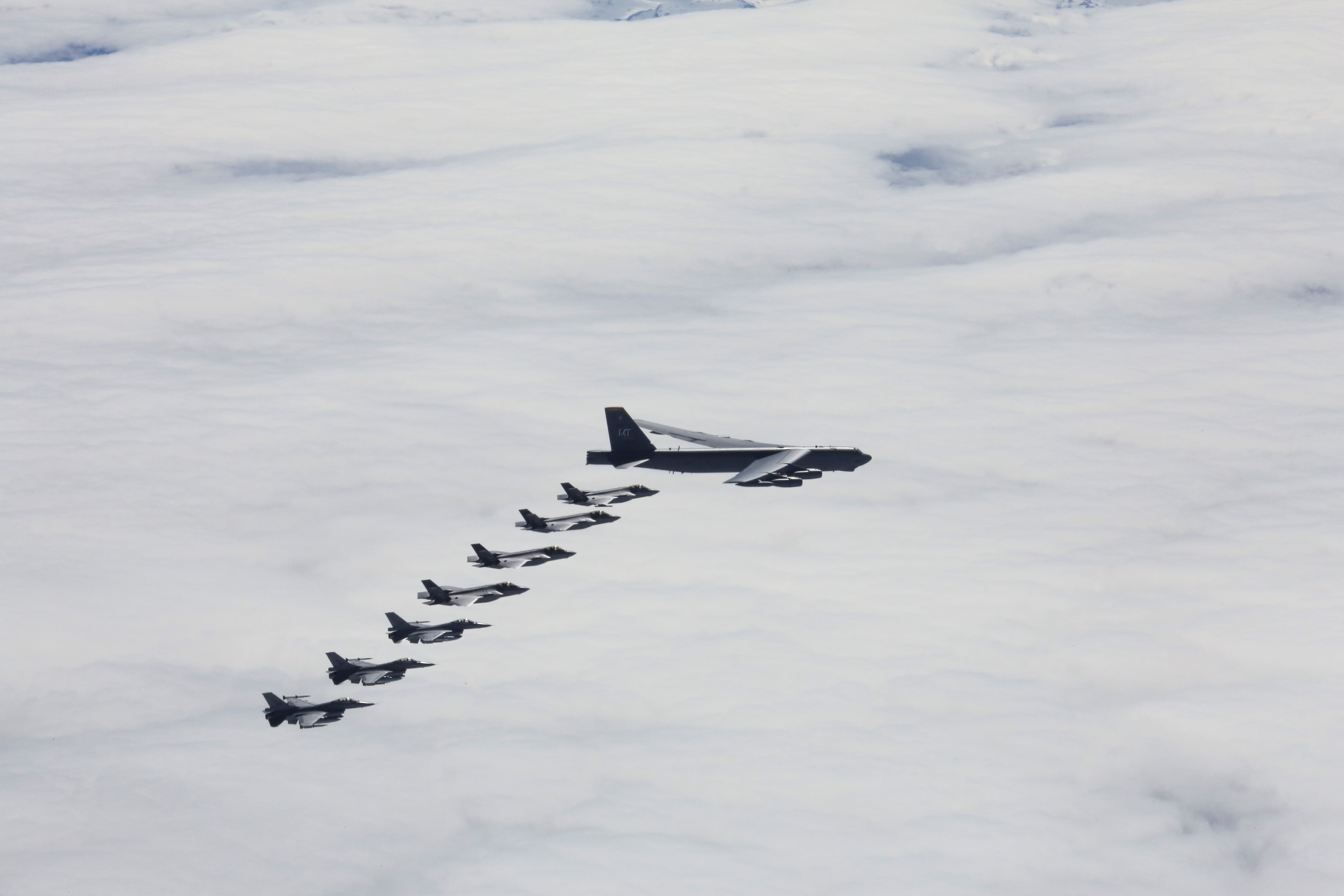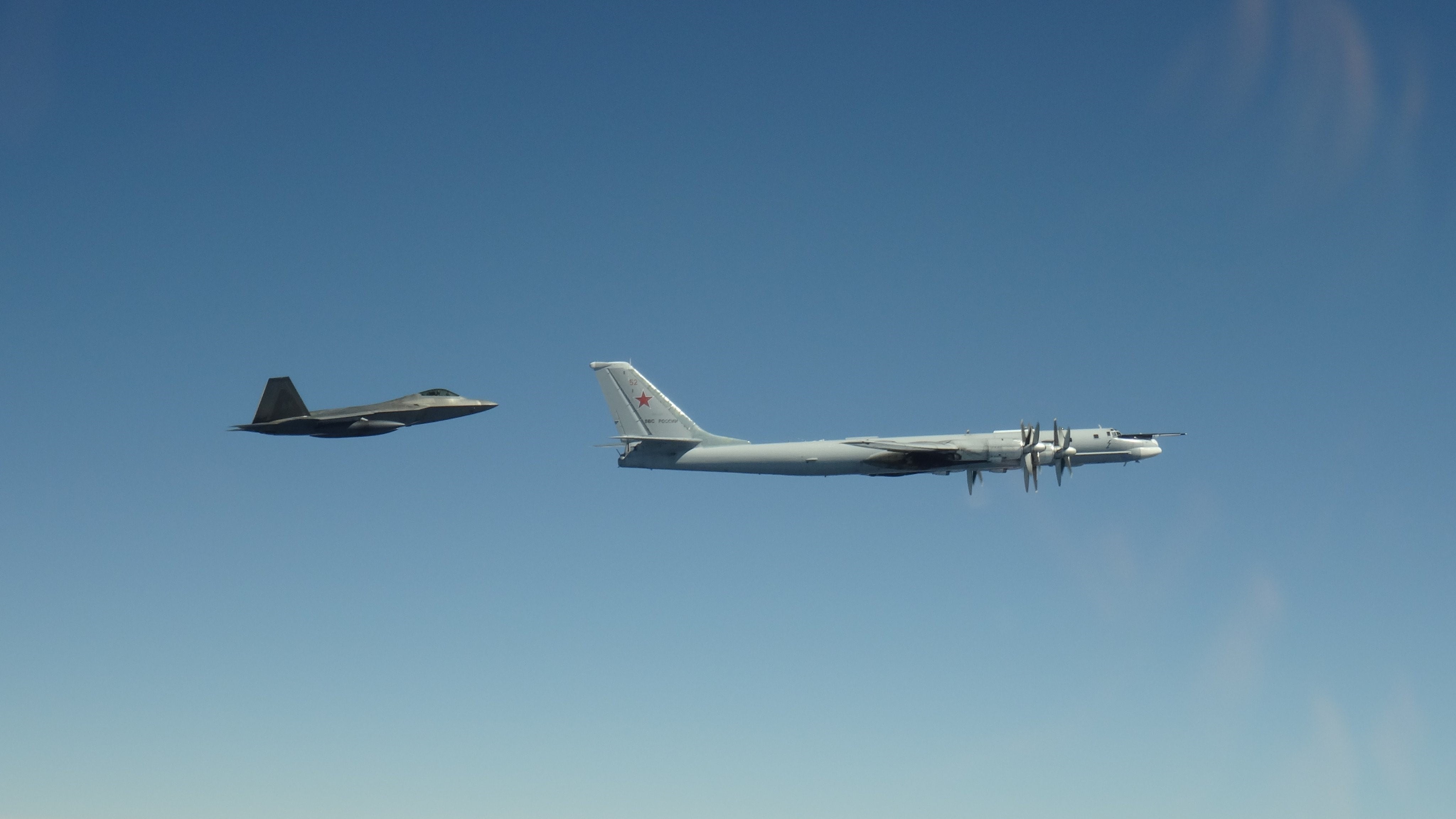Two formations of Russian bombers were intercepted by F-22 Raptor fighters Wednesday after they entered the Alaskan Air Defense Identification Zone, North American Aerospace Defense Command said.
In a series of tweets, NORAD said that both formations consisted of a pair of Russian Tu-95 “Bear” bombers. The first, which were accompanied by two Su-35 fighter jets and an A-50 airborne early warning and control aircraft, came within 20 nautical miles of Alaska, NORAD said.
The second formation, which also included an A-50, came within 32 nautical miles of Alaska, NORAD said.
NORAD said both formations remained in international airspace at all times, and did not enter the United States’ airspace.
RELATED

“Intercepting multiple Russian aircraft demonstrates NORAD forces’ readiness and capability to defend the homeland 24 hours a day, seven days a week, 365 days a year,” NORAD commander Gen. Terrence O’Shaughnessy said in a tweet. “Flying air patrols protects the approaches to our nations and sends a clear message we continue executing our homeland defense missions with the same capability and capacity we always bring to the fight.”

NORAD said its F-22s were supported by an E-3 Airborne Warning and Control System, or AWACS, and KC-135 Stratotankers.
Intercepts of Russian aircraft in the zone around Alaska happen fairly regularly, and have occurred multiple times in recent months. In March, for example, U.S. and Canadian aircraft intercepted two Russian reconnaissance aircraft that were watching and loitering around a U.S. submarine exercise known as ICEX.
The United States has also conducted numerous long-range flights of all three of its types of bombers in recent months, taking off from stateside bases and flying to train with allied air forces in Europe, some near Russia. These bomber missions have included flights over the Black Sea and off the coast of Siberia.
Stephen Losey is the air warfare reporter for Defense News. He previously covered leadership and personnel issues at Air Force Times, and the Pentagon, special operations and air warfare at Military.com. He has traveled to the Middle East to cover U.S. Air Force operations.





